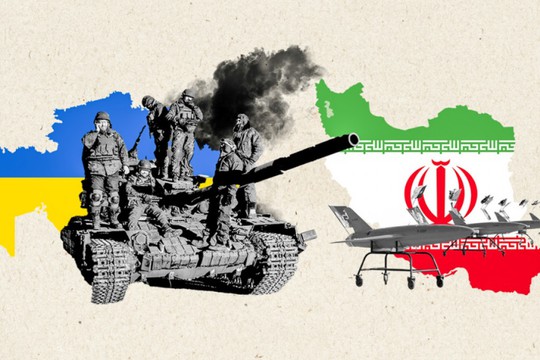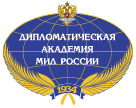Pic.: newarab.com
The Ukraine war and the Israel-Iran conflict are not separate crises, but interlinked fronts in a piecemeal world war — one that pits the US against a de facto alliance of of Russia, Iran and China, writes Thomas Fazi, an UnHerd columnist and international observer.
Donald Trump’s effort to broker a peace deal in Ukraine faltered not simply because of flawed diplomacy, but due to a convergence of political constraints, institutional resistance and fundamental misreadings of the conflict’s nature. What was billed as a bold initiative to end the war has instead exposed the limits of Trump’s foreign policy instincts — and left the United States more entangled than ever.
Ukrainian front
From the outset, Trump underestimated how politically untenable compromise would be for both Europe and Ukraine. For European leaders, the war has become a legitimising force — one that justifies economic sacrifices, centralised governance and increasingly authoritarian policies. Any deal that recognised Russian territorial gains would amount to a political admission of failure, emboldening domestic opposition. Ukraine’s Zelensky faced even higher stakes. A peace deal, particularly one seen as capitulation, could mean the end of his presidency or even threats to his personal safety. These domestic realities made any serious negotiations unlikely — unless the United States exerted overwhelming pressure, which it chose not to do.
Yet even if Trump had pushed harder, his efforts would still have run aground on the shoals of American politics. Within Washington, the national security establishment — including many within Trump’s own administration — remain firmly committed to prolonging the conflict. Despite Trump’s rhetorical break from bipartisan interventionism, he faced deep institutional resistance. Ultimately, he lacked the political will to challenge this entrenched consensus — assuming he ever really wanted to.
From Moscow’s perspective, the war has never been solely about Ukraine. Russia’s demands include a new European security architecture, limits on NATO expansion and recognition of a multipolar world order — one in which Western dominance gives way to a new global architecture based on indivisible security and sovereign equality. In this context, Trump’s push for an immediate ceasefire before addressing broader issues was a nonstarter. So too were proposals such as deploying European “peacekeepers” in Ukraine or endorsing frameworks like the Kellogg Plan, which envisioned a frozen conflict.
Meanwhile, the US repositioned itself as a neutral mediator rather than a direct party to the conflict — despite continuing its military and intelligence support to Ukraine (following a brief pause). That contradiction was always bound to undermine the negotiation process. As Michael Brenner wrote:
“[The US] has been a belligerent from day one. The Ukrainian military was financed, trained, armed and prepared for a war to regain control of the territories that seceded after the 2014 coup or annexed by Russia (Crimea) by Washington. The Pentagon and CIA have had thousands of personnel in the country running Intelligence operations, providing tactical advice, servicing sophisticated equipment, and operating weapons systems like HIMAR which the Ukrainian army would be unable to do on their own. Last week’s audacious drone strikes depended crucially on American electronic Intelligence and guidance. Moreover, we now know that the big offensives of June 2023 around Kherson, the amphibious operation across the Dnieper in Kherson oblast, and the Kursk incursion were planned and directed from the Pentagon. Those abject, costly failures do not nullify their significance as telling evidence that this has been an American war on Russia throughout.”
In the end, Trump’s peace initiative has not only failed — it has deepened America’s stake in the war. While he lacks the appetite to pursue a Biden-style escalation, he also chose not to fully disengage. In doing so, he has made the conflict his own.
It now appears like US military aid is about to cease, with Europe stepping to partially fill the gap — in coordination with the US, one has to assume at this point. But this is unlikely to change Ukraine’s trajectory. A Russian breakthrough — and a potential Ukrainian collapse — remains a distinct possibility. Whether such an outcome would force a return to the negotiating table or lead to further escalation is unclear.
Meanwhile, Russia is likely to maintain a strong military posture in the region, particularly in response to European rearmament and increasingly aggressive rhetoric. This dynamic will almost certainly provoke new rounds of countermeasures, keeping both sides locked in a toxic cycle of escalation.
Iranian front
The eruption of open conflict between Israel and Iran has only deepened the geopolitical fracture lines that were already widening in Ukraine. Though these wars appear geographically and politically distinct, they are, in truth, interlinked fronts in what increasingly resembles a piecemeal world war — one that pits the United States against a de facto alliance of Russia, Iran and China.
This informal bloc, often described as a “strategic partnership” rather than a formal alliance, now features comprehensive military and economic integration. Russia and China conduct regular joint patrols across the Pacific and, together with Iran, stage increasingly frequent naval and military exercises in the Arabian Sea. Their cooperation extends to trade, logistics, energy and, crucially, arms and technology transfers. Financially, they are rapidly de-dollarising their transactions, shifting to rubles and renminbi in an effort to insulate themselves from Western financial pressure.
What unites these three powers is not merely opposition to specific US policies, but a shared conviction that the era of American-led global hegemony must end. Their vision is one of a multipolar order based on sovereign equality, regional power balances and the containment — or outright rejection — of what they (rightly) see as imperial overreach by the US and its allies.
This vision now has real teeth. If the United States escalates its military campaign against Iran, it risks not only igniting a broader regional war but raising the stakes in the ongoing de facto world war. Indeed, as Tariq Ali noted, Trump’s threats against Iran should be seen as part of a wider plan against China:
“The main purpose for destabilising Iran is to get concessions from them. And the concessions are not simply on nuclear reactors. I think there’s a more serious plan to which is to make it impossible for Iran as a sovereign state to negotiate and sell oil and gas directly to China.
The US would like to be the power that determines to whom energy is sold and under what conditions. It’s part of their big plan to surround and lay siege to China… they are concerned and worried about the development of China as a major economic power and they want to control it. So in my opinion, the threats against Iran are more to do with that than anything else.”
In such a scenario, Russia and China would likely respond — not necessarily with direct military intervention, but by flooding Iran with weapons, intelligence and possibly extending a nuclear umbrella as a deterrent. Indeed, China is already backing Iran. As one user noted:
“Iran’s recent missile strikes have become notably more precise, largely due to China granting it access to the advanced BeiDou satellite navigation system. If Pakistan is visibly supporting Iran, it’s unlikely to be acting alone. China supplies most of Pakistan’s military hardware, and its logistical and technical backing is essential to any sustained Pakistani operation.”
…Thus, the Ukraine war and the Israel-Iran conflict are not separate crises, but nodes in a single systemic breakdown of unipolar order. The US finds itself simultaneously overcommitted and under-resourced, confronting adversaries that now act in coordinated defense of a shared strategic goal: the dismantling of American imperial primacy.
read more in our Telegram-channel https://t.me/The_International_Affairs

 11:30 24.06.2025 •
11:30 24.06.2025 •























